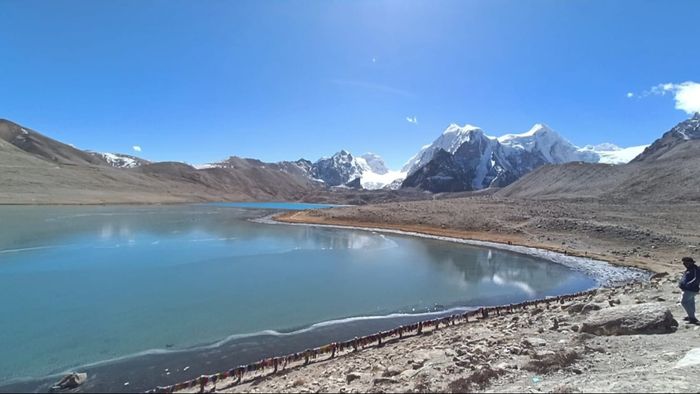Sikkim's prime attraction Gurudongmar Lake remains inaccessible due to safety concerns
Tourists visiting Sikkim this season have been unable to visit the state's prime attraction, Gurudongmar Lake, due to ongoing safety concerns.

- May 18, 2024,
- Updated May 18, 2024, 3:47 PM IST
Tourists visiting Sikkim this season have been unable to visit the state's prime attraction, Gurudongmar Lake, due to ongoing safety concerns.
The stunning high-altitude lake remains off-limits following the impact of a Glacial Lake Outburst Flood (GLOF).
Lachung and Lachen, usually buzz with activity during the peak tourist seasons from March to May and October to December.
This year, however, while Lachung and surrounding areas have welcomed tourists, Lachen and its environs including the famed Gurudongmar Lake, have not seen any visitors.
Despite the influx of over 4 lakh tourists to Sikkim since January – with 3 lakh arriving in the first quarter alone – the scenic route to Lachen and Gurudongmar Lake remains closed. The ongoing risk posed by frequent landslides has necessitated this restriction.
District Commissioner of Mangan, Hem Kumar Chettri, explained the situation: "We are not allowing tourists to Lachen areas as there is risk so we are allowing only local people to travel. However, efforts are being made to open the road, but the fragile land and frequent landslides are causing delays."
Also Read: Sikkim: 2 killed in road accident in Rani Khola; bodies recovered from river
Earlier on May 10, the Tourism and Civil Aviation Department reported significant disruptions in tourist activities.
In the aftermath of the GLOF, which wreaked havoc across the state, Sikkim witnessed a notable decline in tourist influx, dealing a blow to the state's tourism-dependent economy.
According to data from the Tourism and Civil Aviation Department, the domestic tourist inflow plummeted to 41,905 in October 2023, down from 100,174 in September of the same year. Similarly, foreign tourist arrivals saw a dip, with only 3,744 recorded in October compared to 5,912 in the preceding month.
Sikkim faced a severe setback in October 2023 when the GLOF wreaked havoc across the state. The catastrophic event, triggered by the rupture of the South Lhonak Lake, led to widespread flooding in several districts, including Mangan, Gangtok, Pakyong, and Namchi.
The flooding, compounded by the breach of the Chungthang Hydro-Dam on the Teesta River, posed huge challenges to the region's infrastructure and economy.